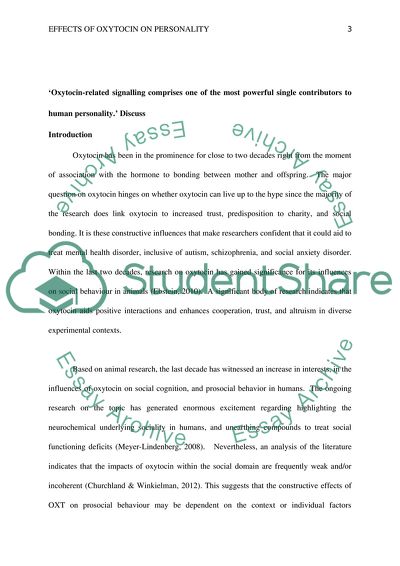Cite this document
(Effects of Oxytocin on Personality Essay Example | Topics and Well Written Essays - 2000 words, n.d.)
Effects of Oxytocin on Personality Essay Example | Topics and Well Written Essays - 2000 words. https://studentshare.org/psychology/1793427-oxytocin-related-signalling-comprises-one-of-the-most-powerful-single-contributors-to-human-personality-discuss
Effects of Oxytocin on Personality Essay Example | Topics and Well Written Essays - 2000 words. https://studentshare.org/psychology/1793427-oxytocin-related-signalling-comprises-one-of-the-most-powerful-single-contributors-to-human-personality-discuss
(Effects of Oxytocin on Personality Essay Example | Topics and Well Written Essays - 2000 Words)
Effects of Oxytocin on Personality Essay Example | Topics and Well Written Essays - 2000 Words. https://studentshare.org/psychology/1793427-oxytocin-related-signalling-comprises-one-of-the-most-powerful-single-contributors-to-human-personality-discuss.
Effects of Oxytocin on Personality Essay Example | Topics and Well Written Essays - 2000 Words. https://studentshare.org/psychology/1793427-oxytocin-related-signalling-comprises-one-of-the-most-powerful-single-contributors-to-human-personality-discuss.
“Effects of Oxytocin on Personality Essay Example | Topics and Well Written Essays - 2000 Words”. https://studentshare.org/psychology/1793427-oxytocin-related-signalling-comprises-one-of-the-most-powerful-single-contributors-to-human-personality-discuss.


